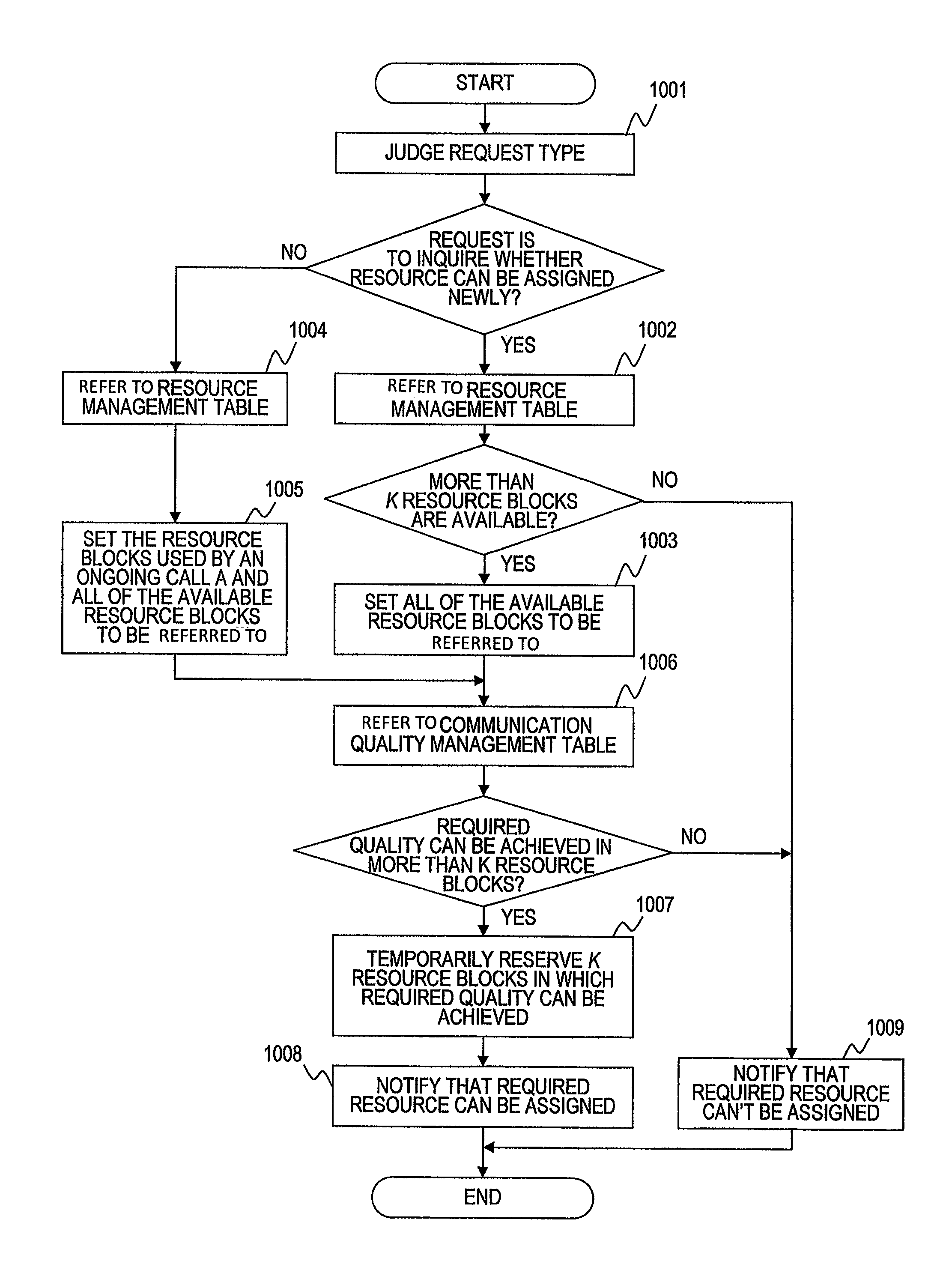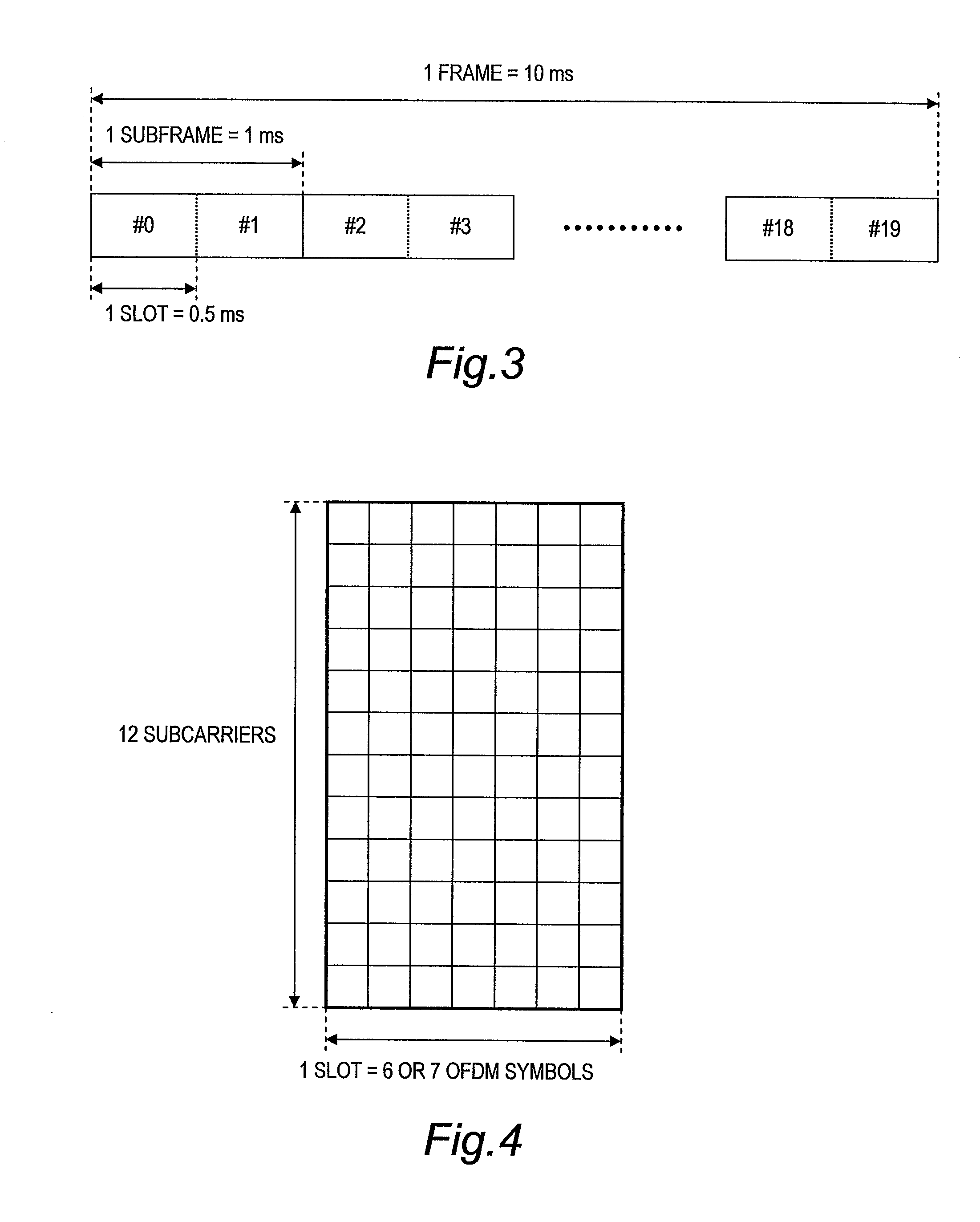Base station and access control method for cellular wireless communication
a wireless communication and access control technology, applied in the field of base stations, can solve the problems of increasing transmission power, affecting the reception of new calls, and and achieve the effect of reducing the blocking rate of new calls
- Summary
- Abstract
- Description
- Claims
- Application Information
AI Technical Summary
Benefits of technology
Problems solved by technology
Method used
Image
Examples
first embodiment
[0052]A first embodiment of this invention is described referring to FIGS. 2 to 17.
[0053]FIG. 2 is a configuration diagram of a cellular wireless communication system according to the first embodiment of this invention.
[0054]The cellular wireless communication system generally includes a plurality of base stations and a plurality of terminals as illustrated in FIG. 2. A base station 201a and a base station 201b are each connected via a wired link to a network 203. A terminal 202a and a terminal 202b are connected via wireless links to the base station 201a and the base station 201b, respectively, to communicate with the network 203.
[0055]The base station 201a and the base station 201b have the same configuration. Therefore, the base station 201a is discussed as a representative example in the description given below on the base stations.
[0056]In embodiments of this invention, wireless links conform to the specifications of Long Term Evolution (LTE). The specifications of wireless li...
second embodiment
[0151]A second embodiment of this invention differs from the first embodiment in the configuration of a QoS-guaranteed traffic management table 736A stored in the base stations 201a and 201b and the operation of the resource compression processing in Step 1505.
[0152]FIG. 18 is an explanatory diagram of the QoS-guaranteed traffic management table 736A according to the second embodiment of this invention.
[0153]The QoS-guaranteed traffic management table 736A in the second embodiment is obtained by adding to the QoS-guaranteed traffic management table 736 in the first embodiment a “priority for keeping assigned resource” field for downlink traffic and uplink traffic of each call in communication.
[0154]The “priority for keeping assigned resource” is an indicator that indicates for each call the degree of insistence to keep the resource amount assigned to the call and not to compress the assigned resources. A larger priority value means a higher degree of insistence to keep assigned radi...
third embodiment
[0159]A third embodiment of this invention differs from the second embodiment in the operation of the resource compression processing of Step 1505 performed in the base stations 201a and 201b.
[0160]FIG. 20 is a flow chart illustrating the operation of the resource compression processing that is executed by the connection control unit 732 according to the third embodiment of this invention.
[0161]In FIG. 20, steps that are the same as those in the resource compression processing of Step 1505 in the first embodiment are denoted by the same numbers that are used in FIG. 16, and a detailed description thereof is omitted here.
[0162]The connection control unit 732 executes Steps 1601 to 1603 in the same manner as described in the first embodiment referring to FIG. 16. Next, the connection control unit 732 divides the number of RBs that are assigned to the selected existing call (Existing Call A) by the packet size, uses the resultant value as a cost function, and compares the value of the...
PUM
 Login to View More
Login to View More Abstract
Description
Claims
Application Information
 Login to View More
Login to View More - R&D
- Intellectual Property
- Life Sciences
- Materials
- Tech Scout
- Unparalleled Data Quality
- Higher Quality Content
- 60% Fewer Hallucinations
Browse by: Latest US Patents, China's latest patents, Technical Efficacy Thesaurus, Application Domain, Technology Topic, Popular Technical Reports.
© 2025 PatSnap. All rights reserved.Legal|Privacy policy|Modern Slavery Act Transparency Statement|Sitemap|About US| Contact US: help@patsnap.com



